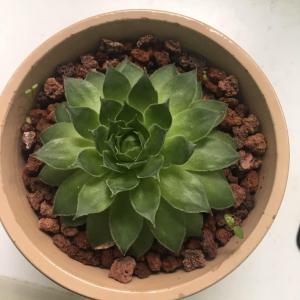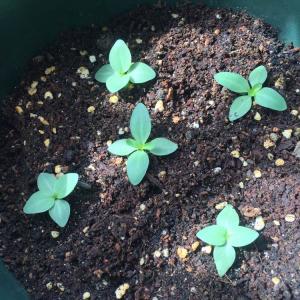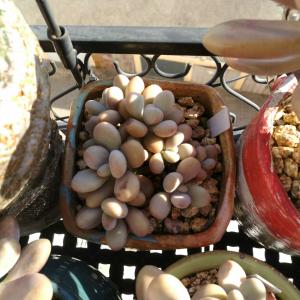文章
Miss Chen
2017年10月05日

El Aromo es un árbol que pertenece a la familia de las Leguminosas, género Acacia, especie dealbata.

Sus principales características son:
Altura: de 8 a 12 metros.
Diámetro: de 5 a 10 metros.
Crecimiento: rápido.
Suelo: bien drenado.
Temperatura: resiste bien el frio.
Transplante: mala tolerancia.
Usos: ornamental y forestal.
Origen: sudeste de Australia.

Es un árbol de porte mediano, copa globosa y rápido crecimiento.
Sus hojas perennes, de color verde claro, están compuestas de folíolos tan pequeños que parecen plumas.
El interés del árbol radica, principalmente, en sus flores amarillas que aparecen durante el invierno como cubriendo la copa de pequeños pompones con un perfume característico.

El aromo prefiere los suelos bien drenados o arenosos y silíceos. Debido a que sus raíces son muy superficiales, pueden tumbarse con los vientos fuertes.
Por tratarse de una especie que no soporta el transplante, es aconsejable comprarlo envasado.
Se reproduce por semillas y el tipo de plantación varía según las especies. Las mismas las veremos en otro post.

Sus principales características son:
Altura: de 8 a 12 metros.
Diámetro: de 5 a 10 metros.
Crecimiento: rápido.
Suelo: bien drenado.
Temperatura: resiste bien el frio.
Transplante: mala tolerancia.
Usos: ornamental y forestal.
Origen: sudeste de Australia.

Es un árbol de porte mediano, copa globosa y rápido crecimiento.
Sus hojas perennes, de color verde claro, están compuestas de folíolos tan pequeños que parecen plumas.
El interés del árbol radica, principalmente, en sus flores amarillas que aparecen durante el invierno como cubriendo la copa de pequeños pompones con un perfume característico.

El aromo prefiere los suelos bien drenados o arenosos y silíceos. Debido a que sus raíces son muy superficiales, pueden tumbarse con los vientos fuertes.
Por tratarse de una especie que no soporta el transplante, es aconsejable comprarlo envasado.
Se reproduce por semillas y el tipo de plantación varía según las especies. Las mismas las veremos en otro post.
1
0
文章
Miss Chen
2017年10月05日

El Arce Japonés es un árbol que pertenece a la familia Aceráceas, género Acer, especie palmatum.

Sus principales características son:
Altura: 3 a 5 metros.
Diámetro: 3 a 5 metros.
Crecimiento: mediano.
Suelo: muy bien drenado y fértil.
Temperatura: tolera bien el frío.
Transplante: muy buena tolerancia.
Usos: ornamental.
Origen: Japón.
El género de los arces comprende infinidad de especies y variedades de árboles pequeños, medianos y grandes, cultivados como ornamentales y forestales en todo el mundo.

El follaje es caduco. Tanto la forma como el color de las hojas varían según la especie.
El arce japonés es un pequeño árbol ramificado desde su base, con copa globosa. Las hojas, de color verde claro, viran al rojo intenso en el otoño, antes de caer.
Esta planta sufre el calor intenso del verano y las hojas pueden quemarse levemente en los bordes. Por los tanto, es aconsejable plantarlos en espacios frescos de semisombra, en suelos fértiles y bien drenados.
El cultivo de esta especie es ornamental y se reproduce por semillas. Por lo general, se lo planta solo debido a sus destacadas características.


Sus principales características son:
Altura: 3 a 5 metros.
Diámetro: 3 a 5 metros.
Crecimiento: mediano.
Suelo: muy bien drenado y fértil.
Temperatura: tolera bien el frío.
Transplante: muy buena tolerancia.
Usos: ornamental.
Origen: Japón.
El género de los arces comprende infinidad de especies y variedades de árboles pequeños, medianos y grandes, cultivados como ornamentales y forestales en todo el mundo.

El follaje es caduco. Tanto la forma como el color de las hojas varían según la especie.
El arce japonés es un pequeño árbol ramificado desde su base, con copa globosa. Las hojas, de color verde claro, viran al rojo intenso en el otoño, antes de caer.
Esta planta sufre el calor intenso del verano y las hojas pueden quemarse levemente en los bordes. Por los tanto, es aconsejable plantarlos en espacios frescos de semisombra, en suelos fértiles y bien drenados.
El cultivo de esta especie es ornamental y se reproduce por semillas. Por lo general, se lo planta solo debido a sus destacadas características.

0
0
文章
Miss Chen
2017年10月01日

El Crepón es un pequeño árbol o arbusto caduco que pertenece a la familia Litráceas, género Lagerstroemia, especie indica.
Sus principales características son:
Altura: 5 a 7 metros.
Diámetro: 3 a 5 metros.
Crecimiento: mediano.
Suelo: muy bien drenado y fértil.
Temperatura: tolera medianamente el frío.
Transplante: muy buena tolerancia.
Usos: ornamental.
Origen: Asia y Oceanía.
El Crespón, posee varias virtudes que lo hacen interesante en las distintas estaciones del año.
En el otoño sus hojas pequeñas adoptan tonalidades rojizo anaranjadas antes de caer, mientras que, durante el verano, la copa se cubre de racimos de flores de diferentes colores como ser blancas, rosadas, lilas o púrpuras según la variedad que se trate. Además, su corteza lisa, de color ocre, se vuelve más lustrosa a medida que el árbol va envejeciendo.
La forma del Crespón puede ser ramificada desde la base o con un solo tronco. Es una palnta de clima cálido, aunque algo resistente al frío, y rústica respecto de los suelos que necesita.
Se cultiva como ornamental. La multiplicación es por gajos y renuevos. Aunque puede plantarse como único ejemplar en jardines pequeños, las plantaciones en grupos de tres o más resultan atractivas. También puede utilizarse como árbol de vereda o de aceras.




Sus principales características son:
Altura: 5 a 7 metros.
Diámetro: 3 a 5 metros.
Crecimiento: mediano.
Suelo: muy bien drenado y fértil.
Temperatura: tolera medianamente el frío.
Transplante: muy buena tolerancia.
Usos: ornamental.
Origen: Asia y Oceanía.
El Crespón, posee varias virtudes que lo hacen interesante en las distintas estaciones del año.
En el otoño sus hojas pequeñas adoptan tonalidades rojizo anaranjadas antes de caer, mientras que, durante el verano, la copa se cubre de racimos de flores de diferentes colores como ser blancas, rosadas, lilas o púrpuras según la variedad que se trate. Además, su corteza lisa, de color ocre, se vuelve más lustrosa a medida que el árbol va envejeciendo.
La forma del Crespón puede ser ramificada desde la base o con un solo tronco. Es una palnta de clima cálido, aunque algo resistente al frío, y rústica respecto de los suelos que necesita.
Se cultiva como ornamental. La multiplicación es por gajos y renuevos. Aunque puede plantarse como único ejemplar en jardines pequeños, las plantaciones en grupos de tres o más resultan atractivas. También puede utilizarse como árbol de vereda o de aceras.




0
0
文章
Miss Chen
2017年10月01日

El Ceibo es un árbol que pertenece a la familia Leguminosas, género Eryhtrina, especie crita-galli.
Sus principales características son:
Altura: de 5 a 8 metros.
Diámetro: de 8 a 10 metros.
Crecimiento: mediano a rápido.
Suelo: es poco exigente, pero de preferencia los húmedos.
Temperatura: sensible a las fuertes heladas.
Transplante: buena tolerancia.
Uso: ornamental.
Origen: Argentina.
Este árbol con flor es la “Flor Nacional Argentina” de Argentina, Sudamérica. Fue declarado como tal en 1942. Es además, una especie autóctona que se desarrolla muy bien en las regiones subtropicales del país.
Su porte es de pequeño a mediano; su copa es irregular y extendida. Presenta ramas arqueadas que se secan en su extremidad durante el invierno, y su corteza es rugosa y oscura.
Las hojas son caducas o semipersistentes en climas cálidos. Las flores, rojas y muy vistosas, aparecen en el verano y atraen una gran cantidad de insectos y colibríes.
Es una especie que prefiere los suelos húmedos y crece naturalmente en las islas del Delta Argentino.
Es una especie de crecimiento rápido, muy apta para jardines, donde se lo suele plantar solo. Su cultivo es ornamental y su madera liviana se usa para tallado.
En las regiones con inviernos muy fríos es recomendable plantarlo en la primavera. Las podas deben efectuarse en dicha estación, cortando los extremos de las ramas que estén secos.





Sus principales características son:
Altura: de 5 a 8 metros.
Diámetro: de 8 a 10 metros.
Crecimiento: mediano a rápido.
Suelo: es poco exigente, pero de preferencia los húmedos.
Temperatura: sensible a las fuertes heladas.
Transplante: buena tolerancia.
Uso: ornamental.
Origen: Argentina.
Este árbol con flor es la “Flor Nacional Argentina” de Argentina, Sudamérica. Fue declarado como tal en 1942. Es además, una especie autóctona que se desarrolla muy bien en las regiones subtropicales del país.
Su porte es de pequeño a mediano; su copa es irregular y extendida. Presenta ramas arqueadas que se secan en su extremidad durante el invierno, y su corteza es rugosa y oscura.
Las hojas son caducas o semipersistentes en climas cálidos. Las flores, rojas y muy vistosas, aparecen en el verano y atraen una gran cantidad de insectos y colibríes.
Es una especie que prefiere los suelos húmedos y crece naturalmente en las islas del Delta Argentino.
Es una especie de crecimiento rápido, muy apta para jardines, donde se lo suele plantar solo. Su cultivo es ornamental y su madera liviana se usa para tallado.
En las regiones con inviernos muy fríos es recomendable plantarlo en la primavera. Las podas deben efectuarse en dicha estación, cortando los extremos de las ramas que estén secos.





0
0
文章
Miss Chen
2017年10月01日

La Acacia Bola es un árbol que pertenece a la familia Leguminosas, género Robinia, especie pseudoacacia, variedad Umbraculifera.
Sus principales características son:
Altura: de 4 a 6 metros.
Diámetro: de 3 a 5 metros.
Crecimiento: rápido.
Suelo: se adapta a todos los tipos.
Temperatura: resiste bien el frío.
Transplante: muy buena tolerancia.
Uso: ornamental.
Origen: Estados Unidos.
La Acacia Bola es un pequeño árbol de follaje caduco, copa compacta y globosa.
Las hojas son de color verde claro y las ramas no presentan espinas. Su principal atractivo radica en la copa redondeada y el follaje denso.
Éste árbol rústico crece en todo tipo de suelos, auqnue prefiere los bien drenados, y presenta una buena tolerancia al frío.
La Acacia Bola se cultiva como ornamental. Crece por injertos sobre pie franco o por estacas.
Suele utilizarse en el arbolado de calles y jardines pequeños.




Sus principales características son:
Altura: de 4 a 6 metros.
Diámetro: de 3 a 5 metros.
Crecimiento: rápido.
Suelo: se adapta a todos los tipos.
Temperatura: resiste bien el frío.
Transplante: muy buena tolerancia.
Uso: ornamental.
Origen: Estados Unidos.
La Acacia Bola es un pequeño árbol de follaje caduco, copa compacta y globosa.
Las hojas son de color verde claro y las ramas no presentan espinas. Su principal atractivo radica en la copa redondeada y el follaje denso.
Éste árbol rústico crece en todo tipo de suelos, auqnue prefiere los bien drenados, y presenta una buena tolerancia al frío.
La Acacia Bola se cultiva como ornamental. Crece por injertos sobre pie franco o por estacas.
Suele utilizarse en el arbolado de calles y jardines pequeños.




0
1
文章
Miss Chen
2017年10月01日

El Alamo es un árbol que pertenece a la familia Salicáceas, género Populus, especie nigra, variedad Italica.

Sus principales características son:
Altura: de 20 a 30 metros.
Diámetro: de 3 a 5 metros.
Crecimiento: rápido.
Suelo: se adapta a todo tipo de suelos.
Temperatura: resiste muy bien el frío.
Transplante: muy buena tolerancia.
Usos: forestal y ornamental.
Origen: América, Europa y Asia.
El álamo piramidal es un parbol de crecimiento muy rápido, que es muy utilizado como barrera para crear microclimas y para tapar visualmente hablando.

Son árboles caducos, de gran porte, cuya característica común es el rápido crecimiento que presentan y su adaptación a todo tipo de suelos y entornos.
Las hojas, de variados tamaños, suelen ponerse amarillas, de un hermoso tono, en otoño antes de caer finalmente. Al soplar el viento emiten un sonido muy particular que los caracteriza.
Generalmente, toleran muy bien los suelos húmedos. Pero cuando hay sequía, el álamo más resistente es el plateado. Además, son árboles susceptibles a algunas enfermedades, como la roya, un hongo que se manifiesta en forma de pústulas anaranjadas en el envés de las hojas.
Se cultivan como especie ornamental y forestal, ya que su madera es muy utilizada en la contruccion de artículos varios. Pueden multiplicarse fácilmente por esquejes durante el invierno.

Sus principales características son:
Altura: de 20 a 30 metros.
Diámetro: de 3 a 5 metros.
Crecimiento: rápido.
Suelo: se adapta a todo tipo de suelos.
Temperatura: resiste muy bien el frío.
Transplante: muy buena tolerancia.
Usos: forestal y ornamental.
Origen: América, Europa y Asia.
El álamo piramidal es un parbol de crecimiento muy rápido, que es muy utilizado como barrera para crear microclimas y para tapar visualmente hablando.

Son árboles caducos, de gran porte, cuya característica común es el rápido crecimiento que presentan y su adaptación a todo tipo de suelos y entornos.
Las hojas, de variados tamaños, suelen ponerse amarillas, de un hermoso tono, en otoño antes de caer finalmente. Al soplar el viento emiten un sonido muy particular que los caracteriza.
Generalmente, toleran muy bien los suelos húmedos. Pero cuando hay sequía, el álamo más resistente es el plateado. Además, son árboles susceptibles a algunas enfermedades, como la roya, un hongo que se manifiesta en forma de pústulas anaranjadas en el envés de las hojas.
Se cultivan como especie ornamental y forestal, ya que su madera es muy utilizada en la contruccion de artículos varios. Pueden multiplicarse fácilmente por esquejes durante el invierno.
0
0
文章
Dummer. ゛☀
2017年09月30日

What comes to mind when one first thinks about “the Lily of the Valley” is a delicate flower that is symbolic of Easter and Weddings. It grows 15 to 30 cm tall, with only one or two leafs, and flowering stems, which have two leaves and 5 to 15 bell-shaped white flowers. The Lily of the Valley grows in the spring of the year and comes in three varieties from China and Japan, Eurasia, and the USA. Sadly, it is a poisonous woodland flowering plant that grows predominately in cooler temperatures in the Northern Hemisphere of Asia and Europe.
The Lily of the Valley is also known as Our Lady’s Tears or Mary’s Tears from Christian legends, which came about from Mary’s weeping when Jesus was being crucified. Another legend of the flower comes from the tears that Eve shed when she was expelled from the Garden of Eden with Adam. Lastly, the last legend was that of Saint Leonard of Noblac during his battles with a dragon.
It should be of no surprise that “the Lily of the Valley” is referred to in the Bible because it is very much a part of Christ and is reflected upon as a rose. As a symbol of humility “the Lily of the Valley” is a sign of Christ’s second coming, along with being a power for men to envision a better world. Although, “the Lily of the Valley” and “the Easter Lily” are often confused, they are both white and stand for humility and purity within the Christian religion. The Lily of the Valley is mentioned in the Bible 15 times and 8 of those times are in the book of the Song of Solomon in the Old Testament.
According to the Bible, the Lily grows in valleys, fields, gardens, and even among thorns. It is a sweet, fragrant flower that relates to the sweetness of Jesus’ ministry especially when He gave Himself for our transgressions. The Lily is also connected to motherhood, poetry, historical traditions and mythology. Then when one thinks about the white petals of the flower, they are reminded of Mary’s virgin body and her glowing soul.
In German mythology the flower is linked to the virgin goddess of spring Ostara and symbolizes life to Pagans. Additionally, the blooming of the lily refers to the feast of Ostara. Once again, the sweet smell and whiteness of the flower remind one of humility and purity of its patron goddess.
The Lily of the Valley is also known as May Lily, May Bells, Lily Constancy, Ladder-to-Heaven, Male Lily, and Muguet. Its scientific name Majalis or Maialis means “belonging to May” and is under the dominion of Mercury astrologically. Lastly, the Lily of the Valley signifies the return of happiness and perhaps this is something that should be considered a lot more in today’s society as it is more and more difficult to find peace.

The Lily of the Valley is also known as Our Lady’s Tears or Mary’s Tears from Christian legends, which came about from Mary’s weeping when Jesus was being crucified. Another legend of the flower comes from the tears that Eve shed when she was expelled from the Garden of Eden with Adam. Lastly, the last legend was that of Saint Leonard of Noblac during his battles with a dragon.

It should be of no surprise that “the Lily of the Valley” is referred to in the Bible because it is very much a part of Christ and is reflected upon as a rose. As a symbol of humility “the Lily of the Valley” is a sign of Christ’s second coming, along with being a power for men to envision a better world. Although, “the Lily of the Valley” and “the Easter Lily” are often confused, they are both white and stand for humility and purity within the Christian religion. The Lily of the Valley is mentioned in the Bible 15 times and 8 of those times are in the book of the Song of Solomon in the Old Testament.

According to the Bible, the Lily grows in valleys, fields, gardens, and even among thorns. It is a sweet, fragrant flower that relates to the sweetness of Jesus’ ministry especially when He gave Himself for our transgressions. The Lily is also connected to motherhood, poetry, historical traditions and mythology. Then when one thinks about the white petals of the flower, they are reminded of Mary’s virgin body and her glowing soul.

In German mythology the flower is linked to the virgin goddess of spring Ostara and symbolizes life to Pagans. Additionally, the blooming of the lily refers to the feast of Ostara. Once again, the sweet smell and whiteness of the flower remind one of humility and purity of its patron goddess.

The Lily of the Valley is also known as May Lily, May Bells, Lily Constancy, Ladder-to-Heaven, Male Lily, and Muguet. Its scientific name Majalis or Maialis means “belonging to May” and is under the dominion of Mercury astrologically. Lastly, the Lily of the Valley signifies the return of happiness and perhaps this is something that should be considered a lot more in today’s society as it is more and more difficult to find peace.
0
0
文章
素雅
2017年09月28日


育苗
选取#香瓜 种子以后,先把它晒两天。然后再用55度的温水一遍倒水一遍搅拌后泡上5到8个小时即可。将种子取出洗净以后再用湿的棉毛巾包好套一个塑料袋,放到30到32度的环境中,一般18到20个小时后芽就能出来了。等到长出了四片叶子的时候就能定植了 。

管理
在植物的苗期,除了花打顶以外等枝杈长到3到5cm时再将杈打掉,最好是在天气比较好的上午,不能用剪刀或是手掐。浇水的话要在长出2片叶子再浇,第一次的时候不需要施肥。等到第一茬瓜鸡蛋大时再用膨瓜肥。一般10到15天浇一次水就可以了。
施肥
幼苗期的时候,一般施氮磷含量都比较多的。茎叶生长较快的时期主要用氮肥。结瓜的时候主要施用钾氮肥。
授粉
如果需要手动授粉就要在上午进行,建议在9到10点之间,应该在雌花开后的两小时授粉。
采收
等到香瓜成熟了之后就可以采收了,具体方法是用手指按靠近果脐的那一面,发软就是熟了,或者是闻一下有么有香瓜所独有的浓香,如果熟了的话就用剪刀剪下来。

0
2
文章
Dummer. ゛☀
2017年09月28日

The Meconopsis genus contains short lived hardy perennials that reach a height of 1 to 5 feet (30 cm to 1.5 m). They carry poppy like flowers that can bloom in spring, summer or the start of autumn (species dependent). Many Meconopsis species are known for their blue poppy like flowers but they can also carry flowers of many other colors including white, orange, pink and yellow. Some of the common names for Meconopsis include Welsh Poppy, Asiatic Poppy, Blue Poppy and Harebell Poppy.
The Blue Poppy is the national flower of Bhutan. Welsh poppies can be invasive.
Growing Conditions and General Care
Full sunlight (cool areas only); full or partial shade. Acidic soil. Add grit to heavy soils. Nutrient-rich soil, add manure, leaf matter or compost if necessary. Moist soil. Supply mulch of manure of bark chippings when planting to help maintain moisture; do not cover the crowns. Regular watering during dry periods in summer to keep the soil moist. No need to water in the winter as the plant prefers a dry soil whilst resting. Cut back to the ground in autumn. Replace regularly as Meconopsis do not live for long time.
How to Grow from Seeds
The seeds of the Meconopsis should be sown on the surface; this can wither be done just before the last frost of spring or towards the end of autumn. Blue Poppies prefer to grow in a shady or partially shady part of the gardens but can tolerate sunny areas in milder climates. They like a rich acidic soil, ideally the soil should be kept moist in the summer, but allowed to dry in the winter.
When starting Blue Poppy off indoors do so about two months in advance. The Meconopsis seeds should be sown in vermiculite. It should take about two to four weeks for blue poppy to germinate at 54 to 64 degrees Fahrenheit (12 to 18 degrees Celsius). Once growing the seedlings should be watered from beneath. Once ready transplant the young Meconopsis plants at a spacing of 12 inches/30 cm (small) to 2.5-3 feet/75-90 cm (large) apart. This should be done following the last frost of spring.
Grower’s Tips
When growing Meconopsis plants in the garden it is very important to keep the soil moist in the summer. Once the growing period has finished, cut back Meconopsis plant to ground level (autumn). If you require more plants then they can be propagated by division at the start of spring.

The Blue Poppy is the national flower of Bhutan. Welsh poppies can be invasive.
Growing Conditions and General Care
Full sunlight (cool areas only); full or partial shade. Acidic soil. Add grit to heavy soils. Nutrient-rich soil, add manure, leaf matter or compost if necessary. Moist soil. Supply mulch of manure of bark chippings when planting to help maintain moisture; do not cover the crowns. Regular watering during dry periods in summer to keep the soil moist. No need to water in the winter as the plant prefers a dry soil whilst resting. Cut back to the ground in autumn. Replace regularly as Meconopsis do not live for long time.

How to Grow from Seeds
The seeds of the Meconopsis should be sown on the surface; this can wither be done just before the last frost of spring or towards the end of autumn. Blue Poppies prefer to grow in a shady or partially shady part of the gardens but can tolerate sunny areas in milder climates. They like a rich acidic soil, ideally the soil should be kept moist in the summer, but allowed to dry in the winter.
When starting Blue Poppy off indoors do so about two months in advance. The Meconopsis seeds should be sown in vermiculite. It should take about two to four weeks for blue poppy to germinate at 54 to 64 degrees Fahrenheit (12 to 18 degrees Celsius). Once growing the seedlings should be watered from beneath. Once ready transplant the young Meconopsis plants at a spacing of 12 inches/30 cm (small) to 2.5-3 feet/75-90 cm (large) apart. This should be done following the last frost of spring.

Grower’s Tips
When growing Meconopsis plants in the garden it is very important to keep the soil moist in the summer. Once the growing period has finished, cut back Meconopsis plant to ground level (autumn). If you require more plants then they can be propagated by division at the start of spring.
0
1
文章
Dummer. ゛☀
2017年09月28日

Camellias are one of the most popular winter- and spring-flowering shrubs, providing a vivid splash of color when little else is in bloom. Most spring-flowering Camellias prefer neutral to acid soil (between pH 7 and pH 5) so those on chalky or alkaline soil will struggle.
When to Plant
The best time to plant them is spring, when you can see the flowers, or in autumn. If you buy one in winter, keep it somewhere sheltered and plant it in spring.
Where to Plant
Most Camellias we grow are raised from four species Camellia japonica, Camellia sasanqua. Camellia saluensis and Camillia reticulate. These are understorey plants found growing under trees near the brighter edges of woods and forests, so they want dappled light in your garden, preferably with overhead leafy shelter.
If you’re growing your Camellia in a container find it a sheltered position, ideally on a north or west-facing wall. This will ensure that the early flowers do not get browned by frost which can easily happen on an cold east-facing wall where morning sun causes a quick thaw. Southern walls are generally too warm and dry.
They need a well-drained position and they will die in water-logged ground due to the lack of oxygen in the soil. They like warm, not hot summers, with plenty of humidity.
Growing Camellias in Pots
Choose a large rugged pot, terracotta, wood or stone, and part fill with ericaceous compost and then add your plant and back fill so that the level of the pot is level with the soil. Water well, preferably with water taken from a water butt. If you do use tap water, which tends to be alkaline, allow it to stand for a morning first.
Re-pot every other year into fresh potting compost. In the intervening years remove the top 2 inches (5 cm) of compost and add fresh compost. You can re-pot back into the same pot if you trim off up to a third of the roots to make room for fresh potting compost, or go up into a larger pot. This regime will keep your Camellia happy.
Growing Camellias in the Ground
Camellias are fast-growing tap-rotted plants and the new growth can snap off in windy positions so staking is advisable for the first few years until the Camellia becomes bushy. They do tolerate windy conditions however, once established, and are often used as windbreaks in gardens where they thrive.
How to Plant
Dig a hole twice the size of the pot and prepare a mixture of leaf mold, garden compost and some animal manure. If this isn’t possible use a loam based compost and add a slow release fertilizer.
Take the plant out of the pot and loosen the root ball with your fingers.
Place the plant in the hole so that the top is level with the ground. Use a bamboo cane balanced on either side of the hole if you’re unsure.
Pruning
This is best done lightly in spring after flowering, in April and May, and this is good practice with all evergreens. However pruning is not necessary! Leave it alone unless it’s got too large.
Growing from Seed
In warm gardens Camellias can set large seeds of hazel nut size inside quince-like fruits. Remove the brown seeds and push them into a pot filled with compost and grit, ensuring they are just below the surface. They will produce a plant within two years for most.
Taking Cuttings
The best time to take cuttings is between August and September. Choose new growth and cut off a section of growth. Pull side shoots away so they have a heel – a ripped off end.
Pull off the lower leaves and trim the bottom of the cutting to get rid of the wispy end and dip the cuttings into hormone rooting powder. Push the cuttings into a mixture of peat and sand and keep them in a warm place out of full sun – ideally the temperature should be 65°F (15°C). Pot up rooted cuttings in the following spring.

When to Plant
The best time to plant them is spring, when you can see the flowers, or in autumn. If you buy one in winter, keep it somewhere sheltered and plant it in spring.
Where to Plant
Most Camellias we grow are raised from four species Camellia japonica, Camellia sasanqua. Camellia saluensis and Camillia reticulate. These are understorey plants found growing under trees near the brighter edges of woods and forests, so they want dappled light in your garden, preferably with overhead leafy shelter.

If you’re growing your Camellia in a container find it a sheltered position, ideally on a north or west-facing wall. This will ensure that the early flowers do not get browned by frost which can easily happen on an cold east-facing wall where morning sun causes a quick thaw. Southern walls are generally too warm and dry.
They need a well-drained position and they will die in water-logged ground due to the lack of oxygen in the soil. They like warm, not hot summers, with plenty of humidity.
Growing Camellias in Pots
Choose a large rugged pot, terracotta, wood or stone, and part fill with ericaceous compost and then add your plant and back fill so that the level of the pot is level with the soil. Water well, preferably with water taken from a water butt. If you do use tap water, which tends to be alkaline, allow it to stand for a morning first.

Re-pot every other year into fresh potting compost. In the intervening years remove the top 2 inches (5 cm) of compost and add fresh compost. You can re-pot back into the same pot if you trim off up to a third of the roots to make room for fresh potting compost, or go up into a larger pot. This regime will keep your Camellia happy.
Growing Camellias in the Ground
Camellias are fast-growing tap-rotted plants and the new growth can snap off in windy positions so staking is advisable for the first few years until the Camellia becomes bushy. They do tolerate windy conditions however, once established, and are often used as windbreaks in gardens where they thrive.

How to Plant
Dig a hole twice the size of the pot and prepare a mixture of leaf mold, garden compost and some animal manure. If this isn’t possible use a loam based compost and add a slow release fertilizer.
Take the plant out of the pot and loosen the root ball with your fingers.
Place the plant in the hole so that the top is level with the ground. Use a bamboo cane balanced on either side of the hole if you’re unsure.
Pruning
This is best done lightly in spring after flowering, in April and May, and this is good practice with all evergreens. However pruning is not necessary! Leave it alone unless it’s got too large.

Growing from Seed
In warm gardens Camellias can set large seeds of hazel nut size inside quince-like fruits. Remove the brown seeds and push them into a pot filled with compost and grit, ensuring they are just below the surface. They will produce a plant within two years for most.
Taking Cuttings
The best time to take cuttings is between August and September. Choose new growth and cut off a section of growth. Pull side shoots away so they have a heel – a ripped off end.

Pull off the lower leaves and trim the bottom of the cutting to get rid of the wispy end and dip the cuttings into hormone rooting powder. Push the cuttings into a mixture of peat and sand and keep them in a warm place out of full sun – ideally the temperature should be 65°F (15°C). Pot up rooted cuttings in the following spring.
0
0
文章
玲儿
2017年09月24日

ディサの基本情報
学名:Disa
科名 / 属名:ラン科 / ディサ属
特徴
ディサの花は、萼が大きく発達し、太くまっすぐに伸びた花茎に、三角の花を3~5輪ほど咲かせます。南部アフリカを中心とした地域に自生する地生ランで、園芸的に魅力がある色彩が鮮やかで大輪の種類は、南アフリカの一部に自生する種に限られています。この種をもとに、各種園芸品種がつくられています。
栽培はきわめて難しく、日本では、夏が涼しく、新鮮な水がある地域でないと、栽培はできません。鉢物として、冬の終わりごろから春にかけて見かけることがありますが、日本での生産量は非常に限られ、本州ではほとんど目にすることがありません。海外から切り花として輸入されることもあり、珍しい花材として人気がありますが、栽培は非常に難しいものです。
種類(原種、園芸品種)
ディサ・ユニフローラ
Disa uniflora
ディサの中ではひときわ大きく、鮮やかな色彩の花を咲かせる原種。南アフリカのケープ州原産で、オレンジ色を基本とするが、ピンク、黄色、白の花もある。多くの交配種の元となっている原種でもある。

ディサ・フォーム
Disa Foam
ユニフローラの特徴を色濃く残す交配種。ユニフローラよりも大輪で、太い花茎をもつ。花色はオレンジ色。鉢物として販売されるのはこの品種か、もしくはこの品種を元にした交配種。

学名:Disa
科名 / 属名:ラン科 / ディサ属
特徴
ディサの花は、萼が大きく発達し、太くまっすぐに伸びた花茎に、三角の花を3~5輪ほど咲かせます。南部アフリカを中心とした地域に自生する地生ランで、園芸的に魅力がある色彩が鮮やかで大輪の種類は、南アフリカの一部に自生する種に限られています。この種をもとに、各種園芸品種がつくられています。
栽培はきわめて難しく、日本では、夏が涼しく、新鮮な水がある地域でないと、栽培はできません。鉢物として、冬の終わりごろから春にかけて見かけることがありますが、日本での生産量は非常に限られ、本州ではほとんど目にすることがありません。海外から切り花として輸入されることもあり、珍しい花材として人気がありますが、栽培は非常に難しいものです。
種類(原種、園芸品種)
ディサ・ユニフローラ
Disa uniflora
ディサの中ではひときわ大きく、鮮やかな色彩の花を咲かせる原種。南アフリカのケープ州原産で、オレンジ色を基本とするが、ピンク、黄色、白の花もある。多くの交配種の元となっている原種でもある。

ディサ・フォーム
Disa Foam
ユニフローラの特徴を色濃く残す交配種。ユニフローラよりも大輪で、太い花茎をもつ。花色はオレンジ色。鉢物として販売されるのはこの品種か、もしくはこの品種を元にした交配種。

0
0












